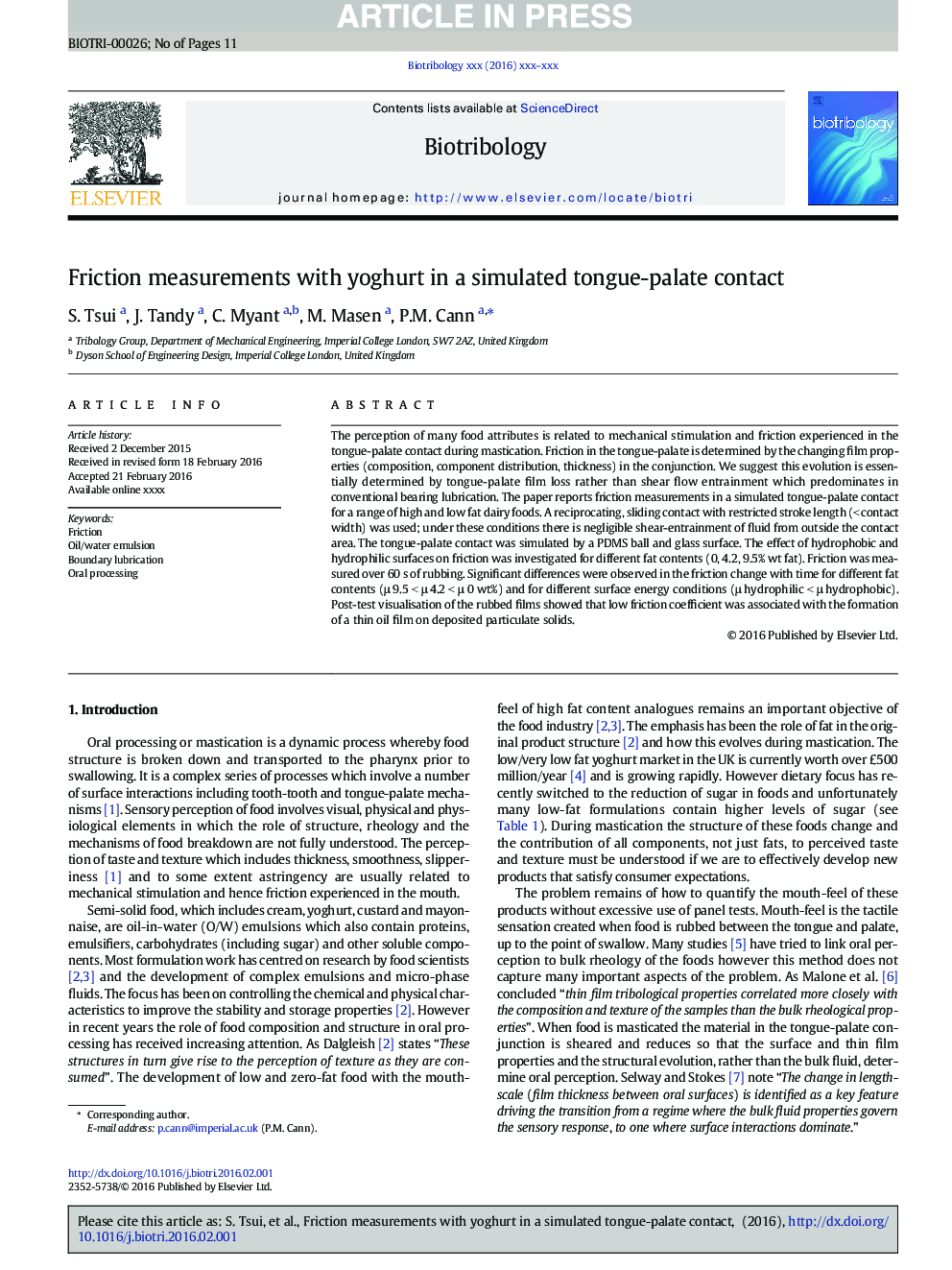| Article ID | Journal | Published Year | Pages | File Type |
|---|---|---|---|---|
| 5011148 | Biotribology | 2016 | 11 Pages |
Abstract
The perception of many food attributes is related to mechanical stimulation and friction experienced in the tongue-palate contact during mastication. Friction in the tongue-palate is determined by the changing film properties (composition, component distribution, thickness) in the conjunction. We suggest this evolution is essentially determined by tongue-palate film loss rather than shear flow entrainment which predominates in conventional bearing lubrication. The paper reports friction measurements in a simulated tongue-palate contact for a range of high and low fat dairy foods. A reciprocating, sliding contact with restricted stroke length (< contact width) was used; under these conditions there is negligible shear-entrainment of fluid from outside the contact area. The tongue-palate contact was simulated by a PDMS ball and glass surface. The effect of hydrophobic and hydrophilic surfaces on friction was investigated for different fat contents (0, 4.2, 9.5% wt fat). Friction was measured over 60 s of rubbing. Significant differences were observed in the friction change with time for different fat contents (μ 9.5 < μ 4.2 < μ 0 wt%) and for different surface energy conditions (μ hydrophilic < μ hydrophobic). Post-test visualisation of the rubbed films showed that low friction coefficient was associated with the formation of a thin oil film on deposited particulate solids.
Related Topics
Physical Sciences and Engineering
Engineering
Biomedical Engineering
Authors
S. Tsui, J. Tandy, C. Myant, M. Masen, P.M. Cann,
